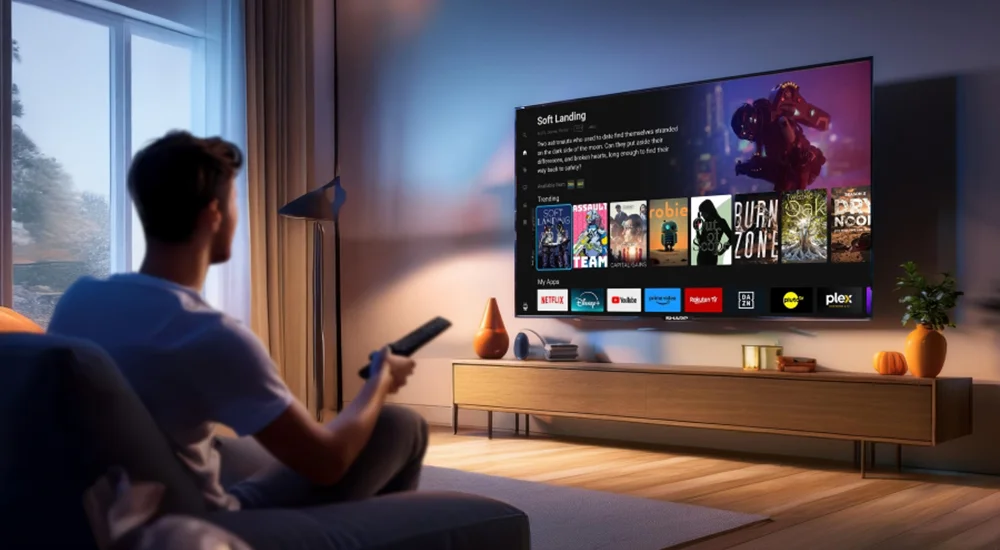How do I fix constant buffering on my IPTV app?
Why your IPTV app buffers all the time
So you sit on the couch, open your IPTV app, choose a channel… and it freezes every 10 seconds. The sound cuts, the picture stops, the remote feels slow, and you just stare at that spinning circle. Annoying, right?
You probably think: “My internet is fast, so why is this thing still buffering?” Don’t worry, you’re not alone. A lot of people have constant buffering even with good Wi-Fi.
In this guide, I’ll show you in simple steps how to fix constant buffering on your IPTV app, make streams stable, and stop that endless loading icon. We’ll talk about your internet, your box, your IPTV app, and some small settings that actually change a lot.
I spend way too much time testing IPTV apps on smart TVs, Android boxes, Firesticks, you name it. I’ve had the same problems you have: buffering, slow menus, channels not loading, crazy crashes. Here I’m just sharing what really worked for me, like talking to a friend, not a company.
Published / Updated: Today
What causes constant buffering on IPTV?
1. Good speed, bad stability
Most people only check one thing: speed. They see 100 Mbps and think “perfect”. But IPTV cares more about stability than pure speed. If your ping jumps, or the line drops for half a second, your IPTV app will buffer.
Things like weak Wi-Fi signal, too many people on the same network, or an old router can make the connection unstable, even if the speed test looks nice. So yeah, fast internet doesn’t always mean smooth streaming.
2. Server or app side issues
Sometimes the problem is not in your house at all. Your IPTV provider can have overloaded servers, bad routes, or just low-quality streams. Also, some IPTV apps are heavier and slow, with confusing menus and bad memory handling.
I’ve had providers where only sports channels buffered, and others where the app itself (like an old version from iptvsmarters-pro.net) was the main problem. So we always need to test more than one thing: internet, app, device, and provider.
Step-by-step guide: how to fix constant buffering on your IPTV app
Step 1 – Restart router, box, and IPTV app
Yeah, it sounds basic. But both your router and your TV box keep small errors in memory when they run for days. A full restart clears a lot of hidden problems.
My experience: so many times I was angry at the provider, then a simple reboot of router + box made buffering 80% better.
Step 2 – Use Ethernet cable instead of Wi-Fi
If you can, connect your device directly to the router with a cable. This is the biggest game changer. Wi-Fi is ok for YouTube, but live IPTV is more sensitive.
My experience: when I switched from Wi-Fi to cable on my Android box, buffering almost disappeared, even during football games.
Step 3 – Sit closer or change Wi-Fi band
If you can’t use a cable, at least move the box closer to the router or use 5 GHz if you are near, and 2.4 GHz if you are far. Walls, floors, and other devices can kill your signal.
My experience: just moving the box one room closer dropped buffering to like 20% of what it was before.
Step 4 – Change the IPTV player inside the app
Many IPTV apps let you select a player: built-in, Exo player, VLC, or system player. Each one handles streams differently. A bad choice here can cause stuttering and slow zapping.
My experience: switching from the default player to Exo player fixed freezing on one TV instantly.
Step 5 – Lower stream quality (4K → 1080p → 720p)
4K and Full HD with very high bitrate look amazing, but they need clean, stable bandwidth. For testing, choose a lower quality version of the same channel if available.
My experience: on one connection, 4K buffered like crazy, but 1080p ran super smooth with almost no visual difference from my sofa.
Step 6 – Turn off VPN or smart DNS (if not needed)
VPN adds extra distance to the signal and can slow things. Some people use it “just in case”. If your provider doesn’t tell you to use VPN, try disabling it and test again.
My experience: on my Firestick, turning off VPN cut buffering in half in one second.
Step 7 – Clear app cache and old playlists
IPTV apps can get heavy with old playlists, VOD covers, logos, and data. Go to app settings and clear cache. If possible, remove older, unused lists.
My experience: after clearing cache, my menus stopped lagging and channel changes felt faster.
Step 8 – Try another IPTV app or test another provider
If nothing improves, install a second IPTV app and test your line there. Or ask your provider for a backup line or trial from another server.
My experience: more than once I blamed my Wi-Fi, but when I tested the same line in another app, everything worked fine. The first app was just bad.
Common mistakes & how to fix them
Mistake 1 – Using a very cheap, weak TV box
Some boxes have low RAM and slow CPUs. When you open big IPTV playlists, they lag and buffer. Fix: close other apps, disable animations, or upgrade to a better device if you can.
Mistake 2 – Too many devices on the same network
If your family is gaming, streaming Netflix, downloading games, and you’re trying to watch IPTV, the line can’t keep up. Fix: pause big downloads, or schedule IPTV watching when the network is not crazy busy.
Mistake 3 – Never checking if the provider is down
People spend an hour changing settings when the provider’s server is simply having issues. Fix: test on mobile data, ask a friend with the same service, or try a second provider to compare.
Quick reference block
- Use Ethernet instead of Wi-Fi if possible.
- Restart router + box + IPTV app regularly.
- Lower channel quality when buffering is bad.
- Try another player inside the IPTV app.
- Turn off VPN unless it’s really required.
- Test your line in a different IPTV app or provider.
Troubleshooting block – specific problems
Issue 1: Buffering every 5–10 seconds on all channels
Fix 1: Switch from Wi-Fi to Ethernet.
Fix 2: Change the player (Exo / VLC / system) in app settings.
Fix 3: Restart router and check nobody is downloading huge files.
My fix: most times, plugging a cable solves this exact problem for me.
Issue 2: Only sports channels buffer badly
Fix 1: Lower quality from 4K/Full HD to 720p.
Fix 2: Ask provider if they have alternative sports servers.
Fix 3: Try watching same game on another device to compare.
My fix: reducing quality during big matches saves me from crazy lag.
Issue 3: Works fine in the morning, unwatchable at night
Fix 1: This often means peak-time overload; test another provider at night.
Fix 2: Try a different server or line from your current provider.
Fix 3: Use a simple speed test at night to see if your ISP slows down.
My fix: when this happens, a second provider as backup saved a lot of movie nights.
Issue 4: Menus are slow and remote feels lazy
Fix 1: Close background apps and clear IPTV app cache.
Fix 2: Uninstall apps you don’t use on the box.
Fix 3: If possible, factory reset and reinstall only what you really need.
My fix: a “clean” box always makes channels change much faster for me.
Issue 5: App crashes or freezes on opening some channels
Fix 1: Update the IPTV app to the latest version.
Fix 2: Switch the player type inside that app.
Fix 3: Reinstall the app completely and re-add your line.
My fix: a fresh reinstall fixed so many random crashes on my Firestick.
Expert tip
Most IPTV apps have a “buffer size” or “preload” option hidden in advanced settings. Try increasing the buffer a bit if your internet is stable but has small drops. This makes the app load more seconds in advance, so tiny issues don’t freeze the picture. Honestly, playing with buffer settings is one of those boring things that actually bring big results.
Real testing story
One weekend I planned a movie night. Popcorn ready, lights off, IPTV app open… and then: freeze, freeze, freeze. I tried switching channels, same thing. The menus felt slow, and even the remote lagged. I was so close to just turning off the TV. Then I remembered I was on Wi-Fi at the far end of the house. I dragged a long Ethernet cable, plugged it in, restarted everything… and suddenly the movie played smooth like Netflix. That night I learned it wasn’t “IPTV is bad”, it was just my setup that needed a little love.
FAQ
1. How much internet speed do I really need for IPTV?
In my tests, 10–20 Mbps per stream is usually enough for HD channels, and more for 4K. But the key is stable speed, not just big numbers on the speed test. If your connection jumps or cuts, you’ll still see buffering, even with high Mbps. So focus on a clean, stable line, not just chasing crazy speed.
2. Why does IPTV buffer but Netflix or YouTube are fine?
In my tests, Netflix and YouTube use very smart CDNs and big buffers, so they hide small internet problems. IPTV streams often come from smaller servers with less buffering. That’s why IPTV can show issues your other apps don’t. It doesn’t always mean your provider is bad, just that IPTV is more “live” and more sensitive. Fixing Wi-Fi and stability usually helps both.
3. Does changing the IPTV app really make a difference?
In my tests, yes, a lot. Some apps are heavy, badly coded, or just don’t work well on certain devices. Trying another app with the same line is one of the easiest ways to see if the issue is the app or the provider. Sometimes just changing the player inside the same app already reduces buffering.
4. Is using a VPN good or bad for IPTV buffering?
In my tests, VPN often makes buffering worse, because it adds distance and reduces speed. The only time it helps is when your ISP is blocking or limiting IPTV traffic and the provider tells you to use VPN. So if you turned on VPN “just for safety”, try disabling it and see if things improve.
5. How do I know if my IPTV provider is the problem?
In my tests, the easiest way is: try the same IPTV app on another internet connection (like mobile hotspot), or try another IPTV provider on your same connection. If only one provider always buffers, even when you fix Wi-Fi and device issues, then yes, the problem is probably on their side. Having a small backup subscription or trial from another provider is very useful for this.

